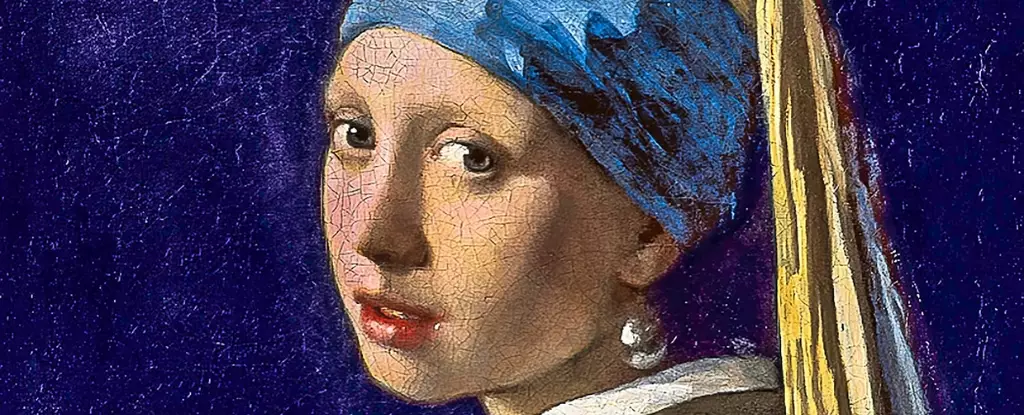Johannes Vermeer’s renowned painting, “Girl With a Pearl Earring,” has captivated audiences for centuries. It transcends mere aesthetics and delves into the realm of human emotion and neurological response. Recent scientific investigations have illuminated why this particular artwork resonates so deeply within the viewer’s psyche, revealing how the brain interacts with visual stimuli. This exploration, commissioned by the Mauritshuis in The Hague, utilizes advanced techniques like EEG and MRI scanning to analyze brain activity in response to this masterpiece compared to other artworks.
The research identified a unique phenomenon termed the “Sustained Attentional Loop.” This refers to the involuntary focus that the painting initiates in the viewer’s brain. According to Martin de Munnik of Neurensics, the observer’s gaze is instinctively directed toward the girl’s eye, transitioning to her mouth and then to the pearl, before culminating back to her eye. This cyclical pattern compels a prolonged engagement with the painting, surpassing the viewing intensity elicited by other artworks. Such sustained engagement demonstrates an intricate interplay between the viewer’s attention and emotional response, suggesting that “Girl With a Pearl Earring” elicits a neurological engagement unlike any other piece.
Further analysis revealed that the precuneus, a brain region tied to consciousness and self-identity, experienced heightened stimulation in the presence of Vermeer’s masterpiece. The data substantiated the intuition that “Girl With a Pearl Earring” is special. This realization sparked insights into why the painting captivates viewers, prompting them to scrutinize it longer and ultimately perceive greater beauty in the subject. De Munnik’s observations suggest that long-term exposure, even in a fleeting visual context, can enhance the viewer’s emotional connection to the subject, rendering “Girl With a Pearl Earring” uniquely compelling among Vermeer’s oeuvre.
The juxtaposition of experiences between viewing original artwork versus reproductions further underscores the importance of authenticity in art appreciation. This study found that viewers exhibit ten times stronger emotional responses when faced with the original painting rather than mere reproductions. This stark difference reinforces the notion that engaging with original works is crucial for cognitive and emotional development. The Mauritshuis director, Martine Gosselink, eloquently emphasized this sentiment, advocating for continual interaction with varying art forms to enrich the brain’s development and emotional understanding.
Vermeer’s paintings typically portray subjects engaged in various activities, yet “Girl With a Pearl Earring” uniquely reverses this trend by presenting a direct, immersive gaze. This intentional design invites viewers into an intimate exchange, establishing a profound connection with the subject. Unlike typical representations in Vermeer’s portfolio, the girl in this painting watches the viewer, creating a dynamic interaction that draws one into a deeper contemplation of the scene. Gosselink identified this as a significant departure from Vermeer’s usual thematic approach, positioning the girl as a compelling presence that beckons the observer closer.
Looking ahead, the potential for extending these studies to other masterpieces, such as Da Vinci’s “Mona Lisa,” offers intriguing possibilities for further understanding the neurological complexities of art appreciation. Such investigations could unveil comparative insights into how different artworks evoke emotional and cognitive responses in diverse ways. The playful rivalry suggested by Gosselink between the two iconic pieces paves the way for an enriched dialogue around artistic legacy and perception.
Vermeer’s “Girl With a Pearl Earring” exemplifies the profound connection between art and the human brain. The blend of sustained attention, emotional reactions, and the intricate interplay of gaze invites us to rethink our understanding of art’s impact on human experience. As science unravels the neurological underpinnings of our aesthetic experiences, we can appreciate not only the visual splendor of such masterpieces but also their ability to resonate within us on a deeply personal and emotional level. Thus, art continues to be a powerful medium through which we explore consciousness and identity,; an eternal dialogue between the viewer and the vision.

Leave a Reply